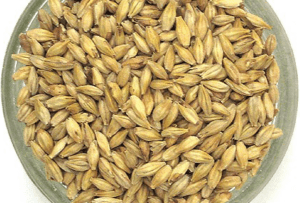 Malt is one of the most vital ingredients in beer and serves as a major source of fermentable sugars in a beer recipe. Malt is barely grain that has gone through a malting process. In the malting process, many organic changes take place, and the enzymatic activity converts the insoluble starch into soluble sugars. Malted barley is the most common starch source. Rice, wheat, rye, and oat are some of the other brewing grains used in making beer. Some interesting facts about brewing grains and malting are given below:
Malt is one of the most vital ingredients in beer and serves as a major source of fermentable sugars in a beer recipe. Malt is barely grain that has gone through a malting process. In the malting process, many organic changes take place, and the enzymatic activity converts the insoluble starch into soluble sugars. Malted barley is the most common starch source. Rice, wheat, rye, and oat are some of the other brewing grains used in making beer. Some interesting facts about brewing grains and malting are given below:
- The process of malting is completed in several steps. At first the grain is soaked in water, this allows germination of the barley to take place. Once the grain has partially germinated, it is dried in a kiln to prepare beer malt.
- A wide array of malts are prepared by varying the temperature and roasting time. As a result, we can have many different malts with many different colors and flavors made from the exact same barley grain.
- Malt contributes to both the color and flavor of a beer. For making dark beers such as stouts and porters, one would want to use dark malts such as Chocolate or Black malt. For lighter colored homebrews, Carapils or some Crystal malts can be used to add body and flavor without adding color.
- To make light-colored specialty malts, one needs malted barley that has gone through higher kiln temperatures than a base malts. These higher-roasted malts give off a tempting aroma and fuller malt flavor to the beer. Munich and Vienna malts are good examples of such malts.
An alternative to using malted barley in your beer recipes is use malt extracts instead. For example a blend of dark colored beer malt syrup and light colored beer malt syrup can be used to create any colored beer imaginable. These malt syrups make brew easier for the beginner and reasonably priced.
________________________________________________________
Read More About Malted Barley And Other Home Brewing Topics,
FREE EMAIL NEWSLETTER:
